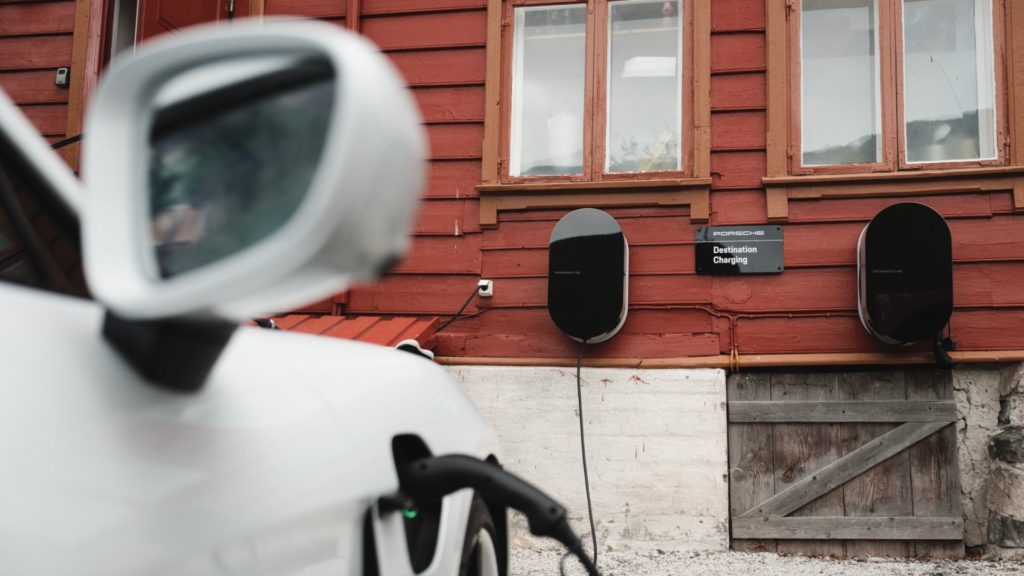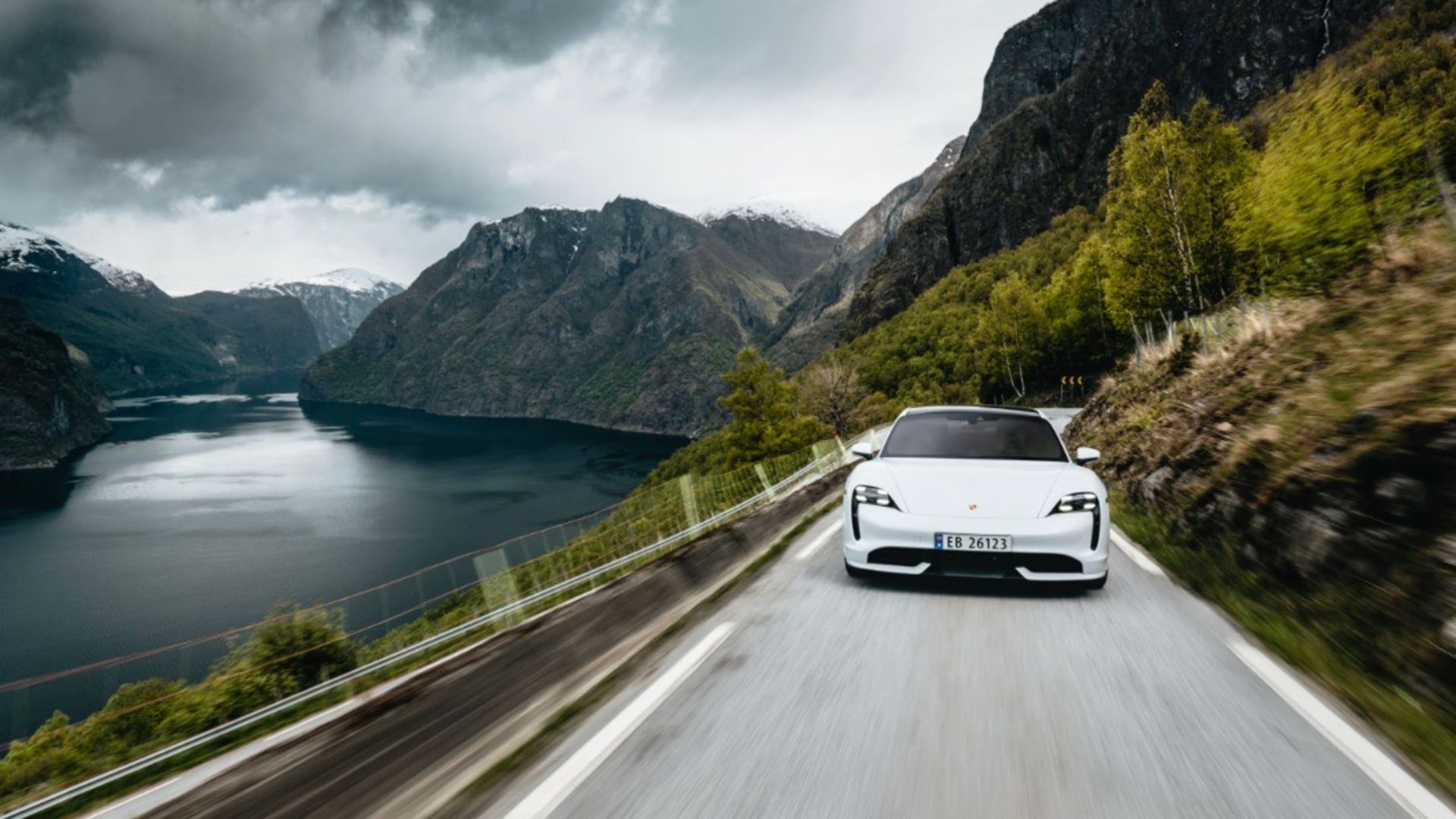Text first published in the Magazine Porsche Engineering, issue 2/2021
More than half of the new vehicles registered in Norway in 2020 had an all-electric powertrain. In addition to modern design and innovative technology, customers there look for long-range and space for the family – making the Porsche Taycan and the new Taycan Cross Turismo the perfect match.
Erling Henningstad loves fast, dynamic cars that handle beautifully. And he has known for many years that an internal combustion engine isn’t necessary to achieve that dream. The Oslo-based IT entrepreneur bought his first electric car back in 2012, and some 250,000 km later, he knows the new powertrain system inside-out.
Henningstad is a man who is passionate about technology – and who meticulously researches every aspect of his car. So when Porsche opened the reservation list in 2018 for what was then still called the Mission E, he didn’t have to think twice – becoming one of the first customers in Norway to sign the order for a car he’d so far only seen a sketch-form. “I’d always dreamed of owning a Porsche,” Henningstad says. “And when an electric model became available, that dream could finally come true. I knew: This will be my car.
Henningstad has been the owner of a Porsche Taycan 4S Performance Plus since July 2020. “The Taycan 4S offers a lot for the money,” says the 59-year-old, who opted for a 93 kWh battery (Taycan 4S: CO2 emissions combined 0 g/km (NEDC), Electricity consumption combined 27.0 – 26.2 kWh/100 km (NEDC)), a 150 kW DC charger, Adaptive Cruise Control (ACC), and Surround View. His favorite feature is the battery temperature gauge, which is important for both charging and performance. “Few cars offer that,” he says. “But the display is very useful, with varying usage and changing seasons.”
You might also like: NORWAY: XPENG G3 WELL RECEIVED BY CUSTOMERS

Impressive charging speed
Henningstad was positively surprised by the range of his electrically powered Porsche: “It was absolutely sufficient in both summer and winter – and I drove my Taycan in temperatures as low as minus 30 degrees,” he says. Range anxiety – rekkeviddeangst in Norwegian – is not an issue for him. “The dreaded battery drain is also no problem with the Taycan – unlike other electric cars, which noticeably lose charge when stationary for a long period,” he says.
The software expert was also impressed by the charging speed: at a rapid charging station with a capacity of 350 kW, the battery can be charged to 50 percent in ten minutes. “It’s almost on-par with fossil fuel cars in terms of fueling time,” he adds.
The fact that Henningstad can hardly tell the difference between his Taycan and a conventionally powered vehicle is due in no small part to the extensive support for e-mobility in Norway. There are almost 19,000 charging stations around the country, with at least two rapid charging stations every 50 km on almost all major roads. There are more than 350 charging stations per 100,000 inhabitants, the country sits in second place in Europe behind the Netherlands, which has 386. To compare, Germany has approximately 54 charging stations per 100,000 inhabitants.
In addition to the benefits offered by Norway’s charging infrastructure, most of the country’s electricity comes from hydroelectric power, making the price of powering an electric car less than those run on fossil fuels. Drivers who opt for electric in Norway also benefit from government incentives, with the 25 percent value-added tax being waived for electric vehicle purchases, and no extra taxes being levied based on emissions and weight, as is the case with fossil-fueled cars. They are also able to park for free in many places and are allowed to use city bus lanes – an invaluable advantage during rush hour.
Only zero-emission new cars from 2025
The enthusiasm for electrically powered cars goes back a long way in Norway. As early as the 1970s, the Strømmens Verksted company began experimenting with electric vehicles and later, ABB Battery Drives developed a powertrain that was used on a trial basis in the VW Golf Citystromer in 1989. A series of road tests followed from 1990 to 1999, including the Ford Think, but government support for e-mobility really ramped up 30 years ago. At that time, the Bellona Foundation environmental group and the pop stars of aha launched an initiative to abolish the fees for electric cars, which gained majority support in 1990. Since then, electric cars have become an ever-more-frequent sight on Norway’s roads. Meanwhile, the country is fully committed to sustainable drive technologies and from 2025, only zero-emission cars will be registered in Norway.
Little wonder, then, that the majority of Norwegian customers are already opting for electric vehicles: nearly 77,000 electric vehicles were sold there in 2020, representing 54 percent of all newly registered vehicles. This figure doesn’t include plug-in hybrids, which actually put the share of electrified cars at nearer 75 percent. The boom has continued this year, too: in March, 56 percent of all new cars sold were electric models. Even with a population of about 5.4 million, this puts Norway in fourth place in the world for electric vehicle sales, and nowhere in Europe are there more electric cars per capita.
Thanks to the high demand, electric vehicle sales are expected to reach 400,000 by the end of 2021 and the Taycan is enjoying its own success: launched on the Norwegian market in January 2020, the thousandth Taycan customer took delivery of their vehicle at the beginning of November 2020, contributing to a doubling of Porsche sales in the country compared to the same period of the previous year.

Perfect for a wide range of conditions
Erling Henningstad has not regretted his choice for a second and he is completely satisfied after his first few months as a Taycan owner. “The interior of the car is stylish and feels solid,” he says. “And the driving characteristics are phenomenal: with its low centre of gravity, the Taycan is well balanced and offers full control regardless of the conditions.” Being able to change many of the car’s characteristics, such as engine response, suspension settings, and electronic stabilization, to match either his mood or the conditions, also suits Hennigstad. “The Taycan can handle everything from race tracks to gravel roads,” he says.
The ability to handle different terrain is particularly important in Norway, where almost all families own a weekend home by the sea or in the mountains. A car that can cope well with dirt roads is indispensable. Customers also want sufficient space for several passengers, and to accommodate sports equipment. This makes the new Porsche Taycan Cross Turismo particularly suitable for the Norse market. “All indications are that it will be a perfect fit for adventurous people like me who appreciate the back roads and extra space,” says Henningstad. “I also expect it to drive as superbly as you’d expect from a Porsche. And if it really does handle better on rough roads with the raised ride height, the Taycan Cross Turismo could put the perfect car for me within reach.”


